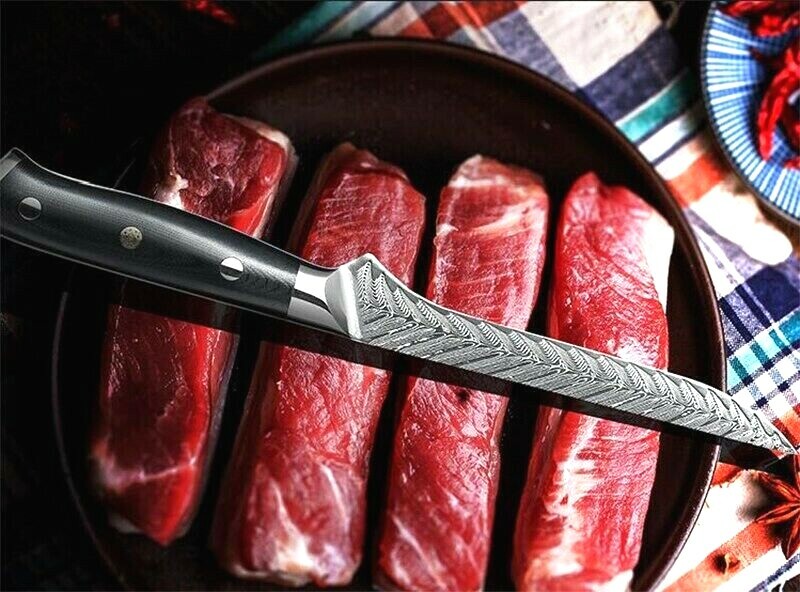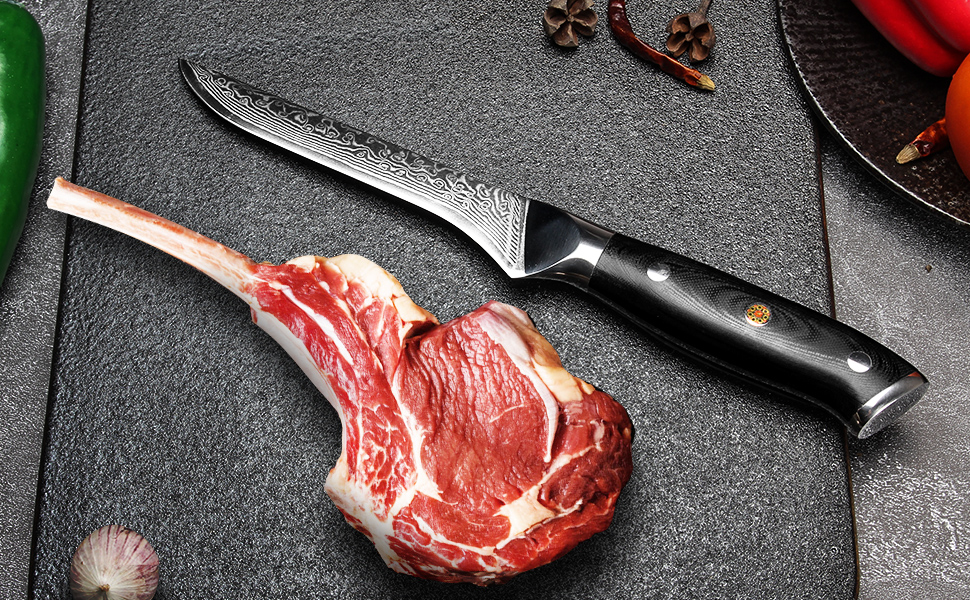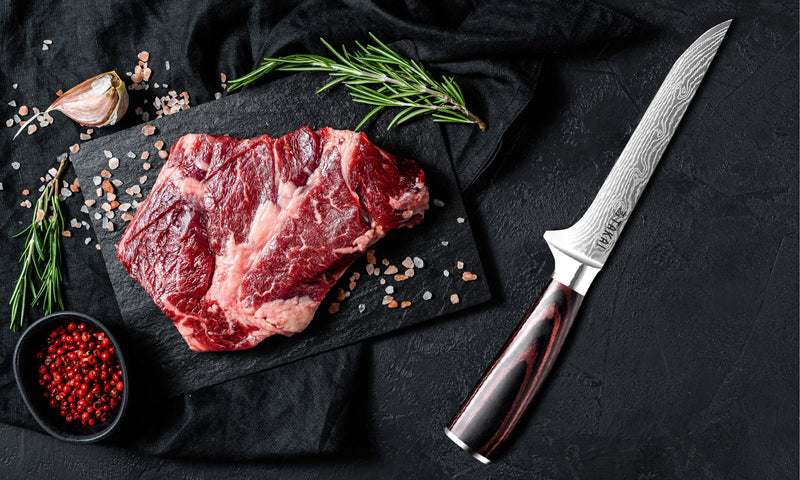In the world of culinary arts, the choice between a boning knife and a slicing knife can significantly impact the quality and ease of your food preparation. Whether you’re a professional chef or a home cook, understanding the differences between these two essential kitchen tools is crucial. In this article, we will explore the unique features, benefits, and uses of both the boning knife and the slicing knife to help you make an informed decision.

Understanding the Boning Knife
What is a Boning Knife?
A boning knife is a specialized kitchen tool designed for removing bones from meat, poultry, and fish. It features a narrow, flexible blade that allows for precise cuts close to the bone, making it an indispensable tool for butchers and chefs alike. The blade’s flexibility and sharpness enable it to maneuver around joints and cartilage with ease, ensuring minimal waste and maximum yield.
Features of a Boning Knife
- Blade Length: Typically ranges from 5 to 7 inches, providing ample reach for various tasks.
- Flexibility: The blade is designed to be flexible, allowing it to bend and contour to the shape of bones.
- Sharpness: A boning knife is incredibly sharp, making it perfect for intricate cuts.
- Handle: Ergonomically designed for a comfortable grip, reducing hand fatigue during prolonged use.
Uses of a Boning Knife
The primary use of a boning knife is to separate meat from bones, but its versatility extends to other tasks as well. It can be used to trim fat, remove skin, and even slice through delicate cuts of meat. For those who enjoy preparing dishes such as beef carpaccio or sashimi, the boning knife is a valuable tool.
Explore Boning Knife Grip Styles
For detailed information on how to properly hold a boning knife, check out this article on Boning Knife Grip Styles.
Understanding the Slicing Knife
What is a Slicing Knife?
A slicing knife is designed for making long, smooth cuts through cooked meats, bread, and vegetables. Its long, narrow blade allows for precision and control, making it ideal for slicing roast meats, poultry, and even large fruits like melons.
Features of a Slicing Knife
- Blade Length: Typically ranges from 8 to 14 inches, providing the length needed for clean, even slices.
- Blade Design: Often features a granton edge (scalloped indentations) to reduce friction and prevent food from sticking.
- Handle: Designed for balance and control, ensuring a comfortable grip during use.
Uses of a Slicing Knife
The slicing knife is perfect for carving large roasts, turkeys, and hams. Its long blade allows for even slices with minimal effort, making it an essential tool for holiday feasts and special occasions. Additionally, the slicing knife can be used for cutting cakes and pastries, providing clean, professional-looking results.
Boning Knife for BBQ Prep
If you’re interested in using a boning knife for barbecue preparation, visit this comprehensive guide on Boning Knife for BBQ Prep.
Comparing Boning Knife vs Slicing Knife
Key Differences
While both the boning knife and slicing knife serve specific purposes, their differences lie in their design and intended use. The boning knife is primarily used for removing bones and trimming meat, while the slicing knife excels at making long, clean slices of cooked meats and other foods.
Choosing the Right Knife for Your Needs
When deciding between a boning knife and a slicing knife, consider the types of tasks you frequently perform in the kitchen. If you often work with raw meat and need to separate it from bones, a boning knife is essential. However, if you frequently carve cooked meats or need to make precise slices, a slicing knife is the better choice.
Narrow Boning Knife
For more information on choosing the right boning knife, read this article on Narrow Boning Knife.
Professional Tips for Using Boning and Slicing Knives
Proper Maintenance
To ensure the longevity and performance of your knives, proper maintenance is crucial. Regularly sharpen your knives using a honing steel or sharpening stone, and store them in a knife block or magnetic strip to prevent damage.
Professional Boning Knife Tips
For expert advice on using a boning knife, check out this article on Professional Boning Knife Tips.
Conclusion
In conclusion, both the boning knife and slicing knife are valuable tools in any kitchen. By understanding their unique features and uses, you can select the right knife for your culinary needs. Whether you’re deboning a chicken or carving a roast, the right knife will make the task easier and more enjoyable.

FAQs
What is the main difference between a boning knife and a slicing knife?
The main difference lies in their design and intended use. A boning knife is designed for removing bones and trimming meat, while a slicing knife is intended for making long, smooth cuts through cooked meats and other foods.
Can I use a boning knife to slice cooked meats?
While it is possible to use a boning knife to slice cooked meats, a slicing knife is better suited for this task due to its longer blade and design for clean, even slices.
How do I maintain my knives for optimal performance?
Regularly sharpen your knives using a honing steel or sharpening stone, and store them in a knife block or magnetic strip to prevent damage. Proper maintenance ensures the longevity and performance of your knives.
This article contains affiliate links. We may earn a commission at no extra cost to you.


